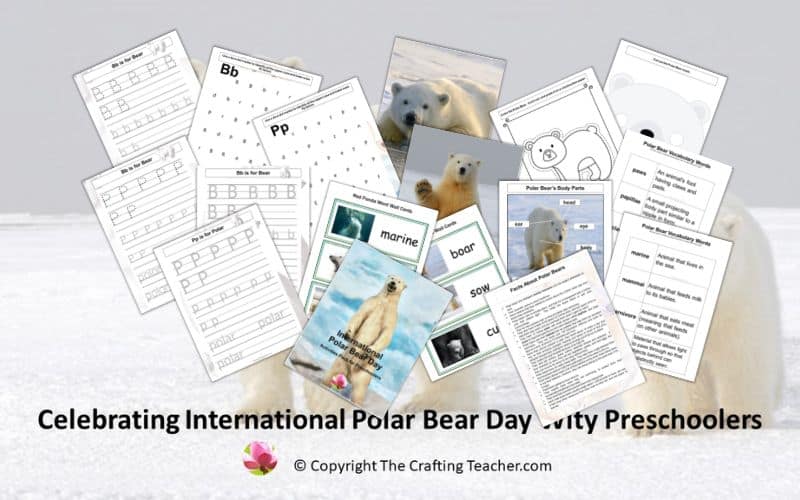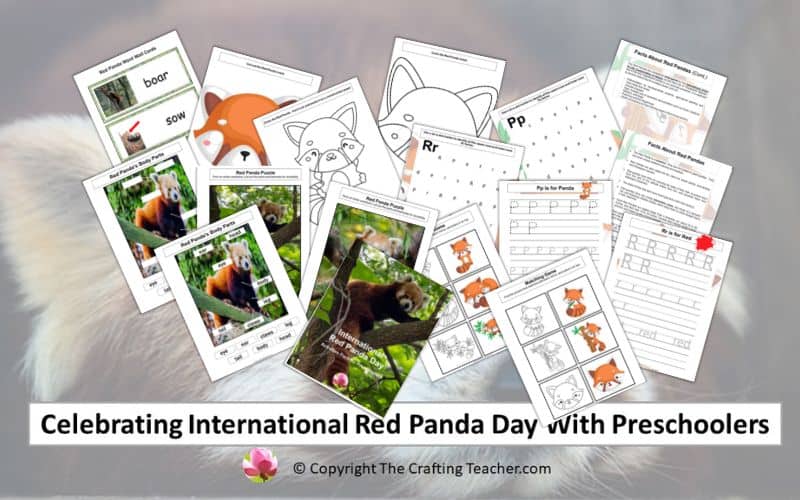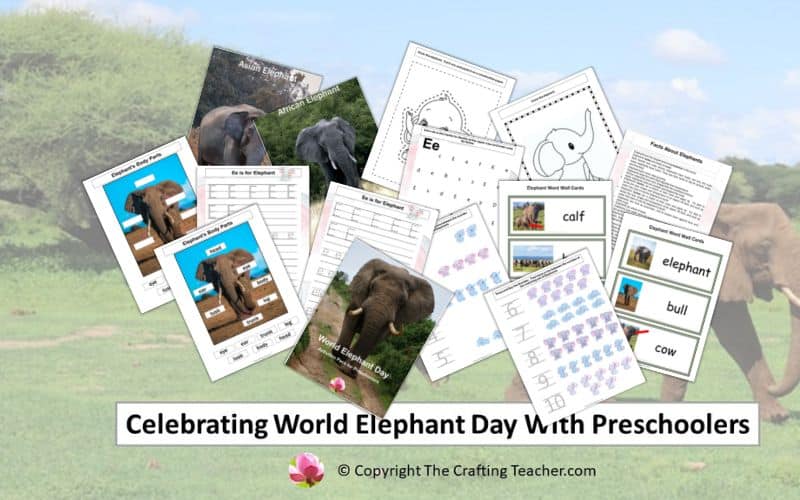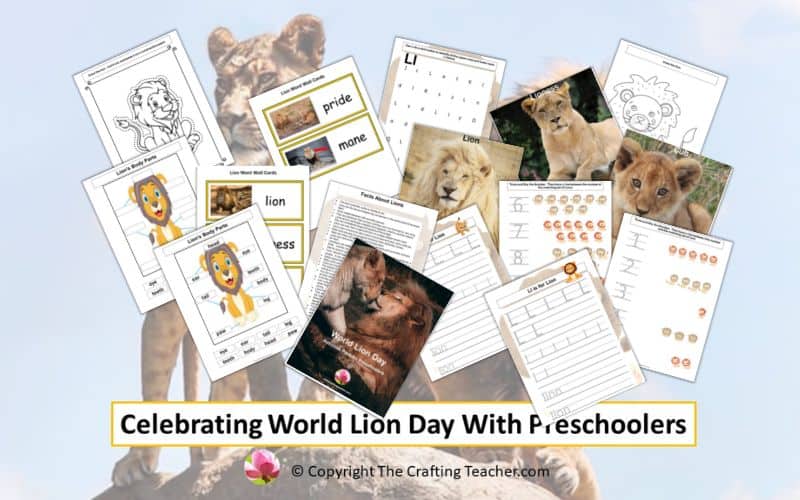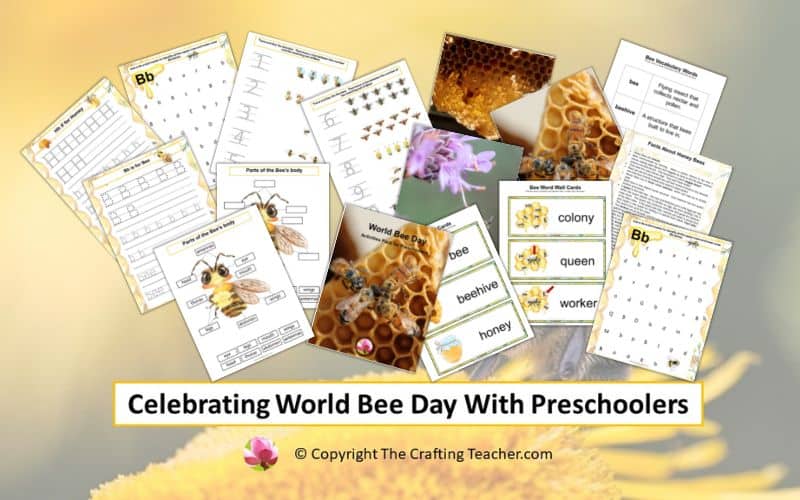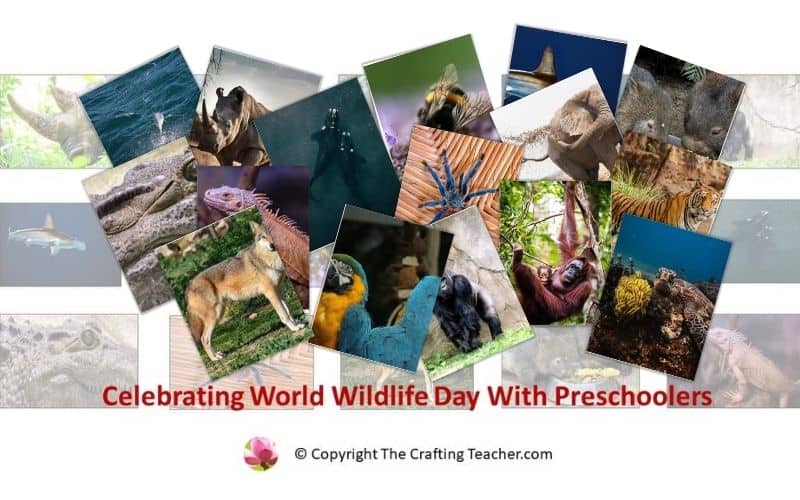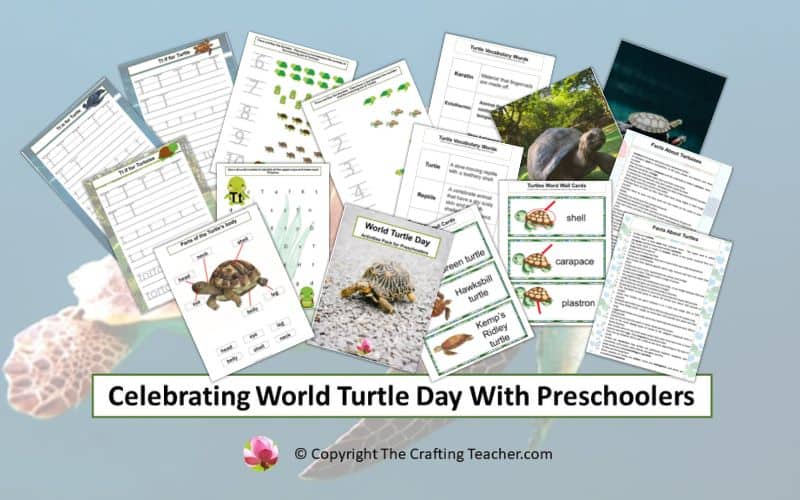Celebrating International Polar Bear Day With Preschoolers
Affiliate Disclosure: “This post contains affiliate links, which means I receive a small commission, at no extra cost, if you make a purchase using those links.”
International Polar Bear Day is celebrated on February 27 with the goal of raising awareness of the huge threats polar bears are facing, and encouraging people to take action to protect their future and preserve this beautiful species. With this in mind, I created a FREE 30 pages-long pack for this day, which you can find at the end of this post.
This pack includes:
- 2 P is for Polar tracing pages (one with dotted and one with shadow letters and words).
- 2 B is for Bear tracing pages (one with dotted and one with shadow letters and words).
- 1 Find the Pp page.
- 1 Find the Bb page.
- 2 Polar Bear facts pages.
- 16 Word Wall cards.
- 5 pages of vocabulary words descriptions with 4 words each.
- 2 Polar Bear Body Parts pages for matching (one with words and one in the blank).
- 5 Polar Bear pages with real pictures.
- 1 Polar Bear color and cut-out page.
- 1 Polar Bear mask.
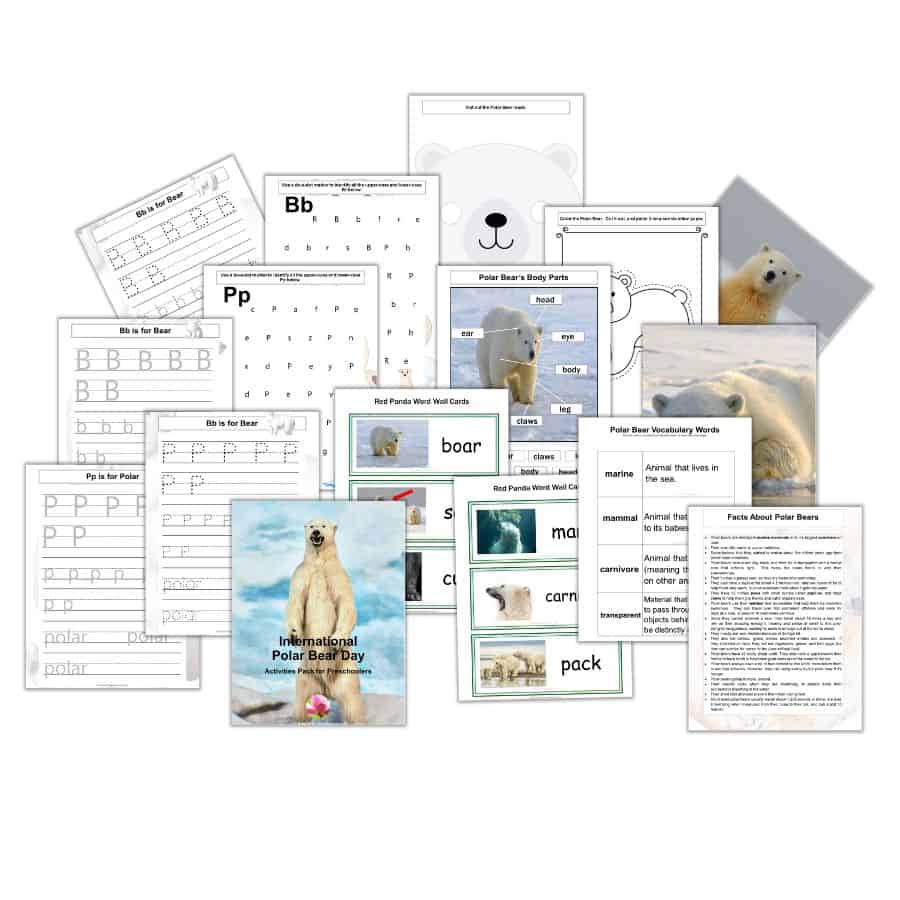
We all know that the Arctic ice is melting and it is seriously affecting the ecosystem. Polar bears are an important species to maintain the balance and health of this ecosystem, and if they become extinct they could start serious consequences that could cause irreversible damage. It is time for us to do something about it.
History of International Polar Bear Day
Polar bears were hunted by indigenous cultures that have lived in the Arctic for thousands of years for food and skin to survive only, which balanced the Arctic ecosystem. But in the 1700s hunters from Europe, Russia, and North America began to overkill the polar bear population, and the species began to decline rapidly.
In the 1950s the increasing use of coal, oil, and gas as fuels began to melt the sea ice, causing serious changes in the polar bear environment, which encouraged environmental groups to try to protect the Arctic without results.
In 1973, the U.S., the former USSR, Denmark, and Norway partnered and signed the International Agreement on the Conservation of Polar Bears and their Habitat, regulating commercial hunting and classifying polar bears as endangered.
In 1994 the non-profit organization called Polar Bears International (PBI) was funded, with the primary mission of establishing programs to protect polar bears and spread awareness through research, education, and activities. With this in mind, in 2011 they celebrated the first International Polar Bear Day, and they continue doing it every year.
This day coincides with the time when polar bear moms and cubs are snugs in their dens, focusing on the protection of denning families across the Arctic.
How to Celebrate the International Polar Bear Day
It doesn’t matter how old you are, your marital status, or your profession. All of us have the power to make a difference if we get together with a common goal. Now, if we are a parent or teachers of a preschooler, we can encourage that little person the love and desire to protect this magnificent species.
There are many things you can do on a personal level and as a parent or teacher of preschoolers. Some ideas are:
- Read your children’s books about polar bears. Below you will find a list of my favorites.
- Create lesson plans for your classroom or homeschool that includes activities about polar bears.
- Learn and teach facts about polar bears, and do other activities in your classroom or at home. You can use the free pack provided below. If you want specific information about polar bear moms and cubs, you can check the Polar Bears International favorite facts.
- Show your children and invite your families to watch videos about polar bears. These are some examples:
- Express your concerns, get familiar with the local and national representatives that are trying to control or eliminate the causes that affect the environment, and give them your support.
- Promote International Polar Bear Day, through your social media profiles and posts, and join others in the conversation. These are some of the links you can use:
- Start reducing your use of carbon at your home, turning off lights, walking or using your bicycle for short distances, disconnecting electronics when they are being used, etc.
- Donate to Polar Bears International (PBI) or any other organization that protects polar bears. Even a little bit of money makes a difference.
- Watch the Polar Bears International (PBI) live events. Their schedule, includes live chats, a special film screening, and a behind the scenes questions and answers.
- Become part of the “Protect Moms and Cubs Challenge” fundraiser and invite your preschoolers, friends, family, and colleagues to join you.
Polar Bear Facts for Kids
- Polar bears are intelligent marine mammals and the largest carnivore on land.
- Their scientific name is Ursus maritimus.
- Some believe that they started to evolve about five million years ago from brown bear ancestors.
- Polar bears’ skin is actually black, and their fur is transparent with a hollow core that reflects light. This helps the bears blend in with their surroundings.
- Their fur has a greasy coat, so they dry faster after swimming.
- They also have a layer of fat about 4.5 inches thick, and two layers of fur to help them stay warm, but can overheat when it gets too warm.
- They have 12 inches paws with small bumps called papillae, and large claws to help them grip the ice and catch slippery seals.
- Polar bears use their webbed feet as paddles that help them be excellent swimmers. They can travel over 100 kilometers offshore and swim for days at a time, at around 10 kilometers per hour.
- Since they cannot outswim a seal, they travel about 19 miles a day and rely on their amazing eyesight, hearing, and sense of smell to find prey, sitting for long periods, and waiting for seals to emerge out of the ice to attack.
- They mostly eat seal blubber because of its high fat.
- They also eat caribou, grass, walrus, beached whales, and seaweed. If they are stranded on land, they will eat vegetation, geese, and bird eggs, but they can survive for seven to ten days without food.
- Polar bears have 42 really sharp teeth. They also have a gap between their front and back teeth to help them grab seals from the water to the ice.
- Polar bears always leave a bit of food behind so the Arctic foxes follow them to eat their leftovers. However, they risk being eaten by the polar bear if it’s hungry.
- Polar bears gallop to move around.
- Their nostrils close when they are swimming, to protect them from accidentally breathing in the water.
- Their short tails and ears prevent them from losing heat.
- Adult male polar bears usually weigh about 1,200 pounds or more, are over 8 feet long when measured from their nose to their tail, and can stand 10 feet tall.
- Female polar bears are smaller, and usually, only weigh about 330 to 650 pounds.
- Polar bears also communicate through sight, touch, and smell. They sway their heads from side to side when they want to play. When stressed they make chuffing sounds and use loud roars, hisses, or growls when they’re angry. Their growls get deeper when they are defending food. They also attack with lowered heads and ears laid back and move downwind to show submission.
- When polar bears are looking for a mate they get stinky feet.
- They clean their bodies by rolling around in the snow.
- Polar bears spend part of the year on land but they don’t have territory, because the ice moves all the time.
- They like to be alone, but sometimes they can be found in a group called a pack or a sleuth.
- An adult male polar bear is called boar, a female is called a sow, and a baby is called a cub.
- Polar bears don’t hibernate.
- Mother bears build snow dens to birth their babies in November or December, and use their reserved fat to keep the babies warm.
- Polar bear cubs are very small. They’re about the size of a stick of butter, and weigh the same as a guinea pig.
- Females usually have two cubs, and they don’t eat or drink during that time.
- They emerge from the den four to five months later. The cubs will stay with their mother for about two years. During that time they learn how to survive in the Arctic.
- Polar bears can live for about 25 to 30 years in the wild.
- The polar bear population is on the decline and is considered vulnerable because they are losing their habitat due to climate change, which is melting the ice. What is worse, scientists think they might become extinct in the coming years.
Books About Polar Bears
These are some of my favorite books about polar bears. If you don’t have any available, you can go to your local library, or used book store and use my links on the pictures to get them from Amazon quickly. Get as many as you can, read them to your preschoolers, and fill your library and centers with them.














Pin It For Later
If you are in a rush and don’t have time to read the post and download the printable but want to save it for later, pin it to one of your Pinterest boards.
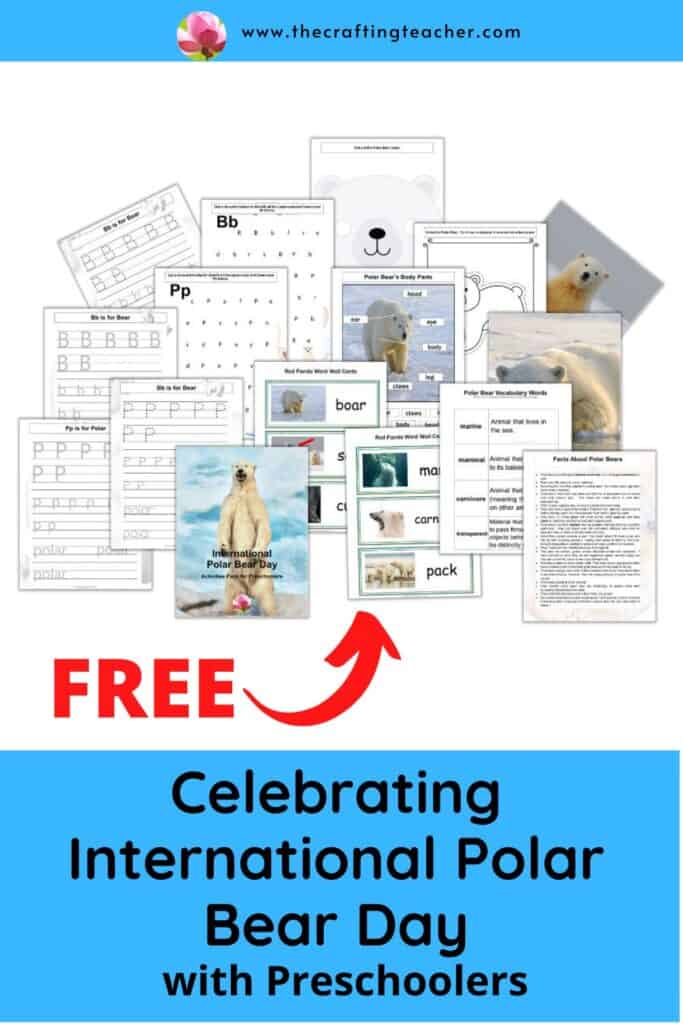
I feel like we, as educators and parents have to do everything we can to create in our preschoolers the desire to become defenders of the planet and its inhabitants for life so that future generations can get to know and enjoy all existing species.
I hope you enjoy these ideas and help you have fun during the International Polar Bear celebration with your preschoolers. To get the FREE pack, you just have to click on the link below and put your information, for an immediate download.
Be happy, safe, and creative. I wish you well.
Love,

P.D. Please let me know if any of these ideas worked for you, or if you think I need to add or replace something. My goal is to help you in any way I can.

